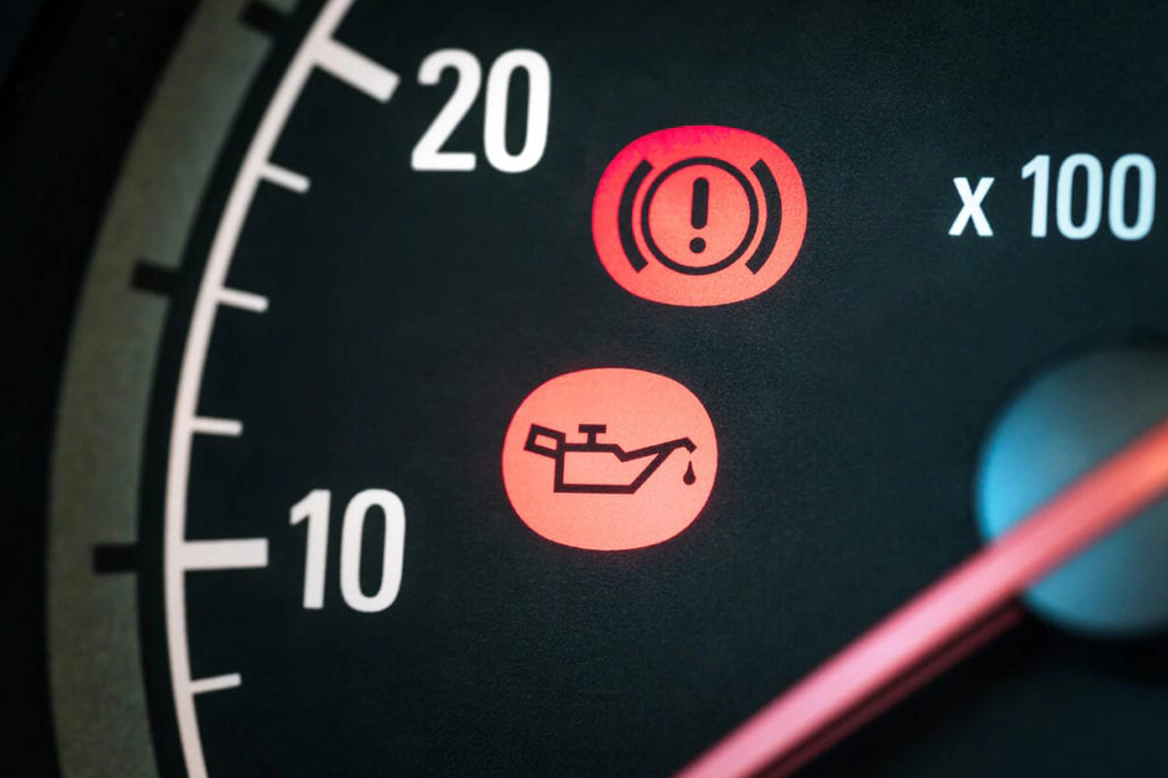Low Oil Pressure Light On?
Your engine needs oil to survive. Without it, it won’t be able to function and may cause severe or irreversible damage to the engine, not to mention your wallet. The low oil pressure warning light on your vehicle’s dashboard isn’t something that should light up very often. However, if it does, you should stop driving immediately. The low oil pressure light is a warning that there’s not enough oil pressure or that the oil level is too low. This prevents the oil from going through the narrow passages to provide sufficient lubrication. Lack of lubrication can cause the engine to seize up or cause damage beyond repair. Find out what can cause the low oil pressure light to come on and how you can prevent it from happening in your car.

The low oil pressure light on your dashboard, like the rest of your on-board diagnostic system, is direct communication from your car’s computer about what’s going on with your vehicle. When this light comes on, however, similar to a flashing check engine light, you’ll need to stop driving, turn off the engine, and once cool, check the oil level.
What are some reasons the oil pressure light comes on
Common causes that trigger the illumination of the low oil pressure light include:
- Not enough or worn-out oil – Maintenance on any vehicle is key to keeping it on the road. An oil change should always be on your to-do list every 3-6 months or between 3,000 – 5,000 miles. This ensures you’ll always have clean, fresh oil circulating through your engine.
- Engine wear – Oil moves throughout the engine through the crankshaft bearing and the camshaft bearings. If the area has broadened because of worn parts, oil flows too easily reducing oil pressure. The oil pump must force oil through narrow areas under bearings and passageways. These are the areas that build pressure in the system because they control the rate of flow. The faster the engine moves, the higher the flow rate and pressure.
- Faulty Oil Pressure Gauge – Your engine may have plenty of oil in the pan and it may be perfectly fine, but the trouble lies within the oil pressure gauge. Electrical issues and trouble with the wiring can cause the gauge to malfunction and produce a false reading. A technician will need to perform a mechanical oil pressure test to determine whether there is a lack of pressure or not.
- Clogged or Dirty Air Filter – Oil filters play a key role in maintaining oil pressure. If the filter becomes clogged, it will increase the pressure and reduce the flow. A pressure relief valve on the oil filter prevents the pressure from getting too high. If it’s damaged, it won’t be able to do its job, allowing engine oil to flow more easily, reducing pressure.
- Oil Viscosity – Higher viscosity oil is thicker and doesn’t flow as quickly as thinner oil. This affects the oil pressure depending on the time of year. High viscosity oil prevents oil pressure from building rapidly.
- Engine Overheating – An overheating engine is not just a headache for the driver. It’s hard on the engine as it causes the oil to thin, preventing pressure build up. It has a similar effect as using a lower viscosity oil than the vehicle requires.
- Faulty Oil Pump – While not as common, a faulty oil pump may create wider passageways between the rotors causing a drop in the rate of flow.
- Worn Out Internal Components – Each component in the engine contributes to the combustion process. When these components fail, the oil may unintentionally enter the combustion chamber and get burned, resulting in a drop in the engine oil level and pressure. This is easily recognized as it often produces a blue smoke that exits through the tailpipe.
Low Oil Pressure Light Flickers
You may observe that the low oil pressure warning light comes on and off while you’re driving. This is because the light will come on when the oil pressure drops below 5 – 10 PSI at idle, depending on the car. Unless the pressure drops suddenly, you may also notice a knocking sound. The cause of the light coming on or turning off can also depend on whether your vehicle is moving or at an idle.
If the oil light flickers on and off while the vehicle is stopped or at an idle, there may be a problem with the oil sensor or the pressure is too low. At the very least, the engine should have 5 PSI when not moving. If the PSI is less than 5, this will trigger the oil light and cause it to flicker off and on. If the light flickers while the vehicle is in motion, the oil levels may be too low. Check the oil level and add motor oil to the vehicle, if needed, and continue to monitor the light. If the oil was indeed low, the light should turn off. If not, it may be that the engine bearings are worn. This is an unfavorable situation as it may cause the engine oil to release oil from where it was once contained. A technician will need to inspect and repair it immediately.
The best way to prevent your oil pressure light from illuminating is by ensuring your vehicle receives routine maintenance including regularly scheduled oil changes. Engine knocking, oil pressure gauge low at idle, and loss of engine performance are all warnings that your engine is having difficulty sending oil throughout the engine. Ignoring oil pressure problems can create serious problems within the engine block. Don’t wait to have an inspection, or you may find yourself with a blown engine. Contact a certified professional to help keep your engine running smoothly right away.